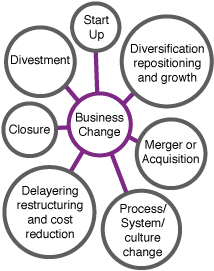HOW YOU ARE affects HOW YOU LEAD – and HOW YOUR BUSINESS PERFORMS
Consider this: The type of person you are – made up by things such as your ambitions, beliefs, work preferences and motivations – shapes the type of leader you are. And the type of leader you are shapes the way your business functions.
There are other influences on business performance apart from your leadership, particularly the more complex your operating environment. However as a leader, you have a major role in enabling performance: not just with the strategy you set, but also in your personal role-model and expectations of behaviour which feed into performance standards across the organization.
The Coachplus Leadership Model
Effective communications
Confidence
Work-life balance
Career crossroads
Your purpose in life
- Your leadership experience and
expectations, goals, work values,
beliefs and skills - Your company’s situation and culture
- Your external environment
all shape how you operate as a leader


Prioritising and focus
Influence and gravitas
Relationship management skills
Leading change
First 90 days in new role
Delegation and empowerment
Address dysfunctional team
Remote or virtual teams
New team set-up
Business performance review –
Culture change – eg for innovation
Implementing organizational change for
- new IT or process
Assessing organization – eg for
- effectiveness or change readiness
Customer-supplier relationships
Competitor positioning
Industry positioning
Stakeholder relationships
Social responsibility
Coachplus helps you draw on personal and organizational levers for change
Let’s say you are a high-energy driver who is motivated by stretching goals and pushing for results. You are likely to:
work for a similarly results-driven company, which has promoted or head-hunted you into a leadership position
or work for a less driven company, where you attempt to create a high-energy team in your own image
or operate counter-culturally in a different style of organization, such as one which is more relationship-focused, perhaps
because you have been engaged to bring about a change in working culture.
These last two examples can create tension for yourself and others. At its best, operating against employee norms stimulates improvement, but mishandled can compromise productivity and risk careers – including the leader’s. Whereas the comfort derived from operating in a more compatible work culture, as in the first example, can lead to blind spots and missed opportunity for you, your team and your organization.
How to be an effective manager? Coaching helps you to weigh up the relevant factors – personal, leadership, internal & external business context – to set goals which capitalise on strengths, and use the human and organizational levers for change available to you.

